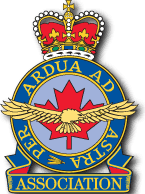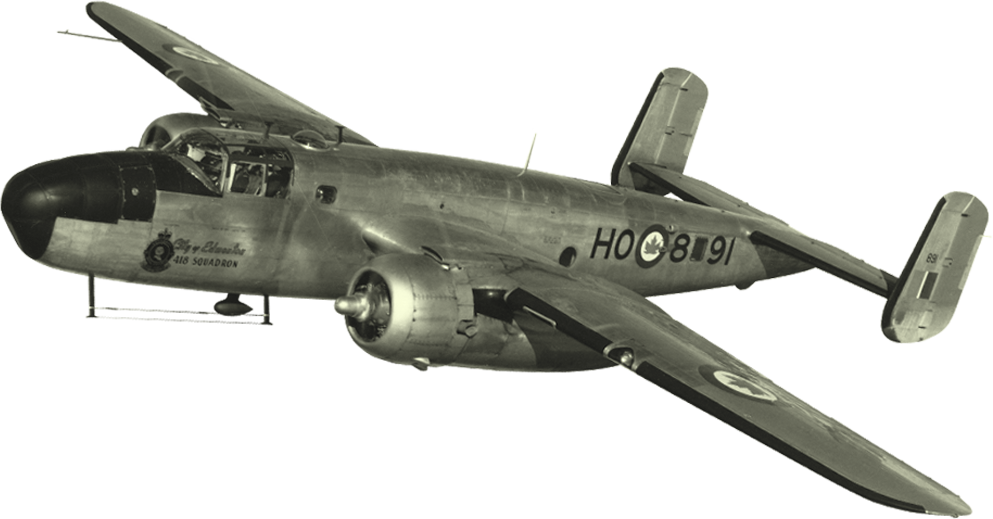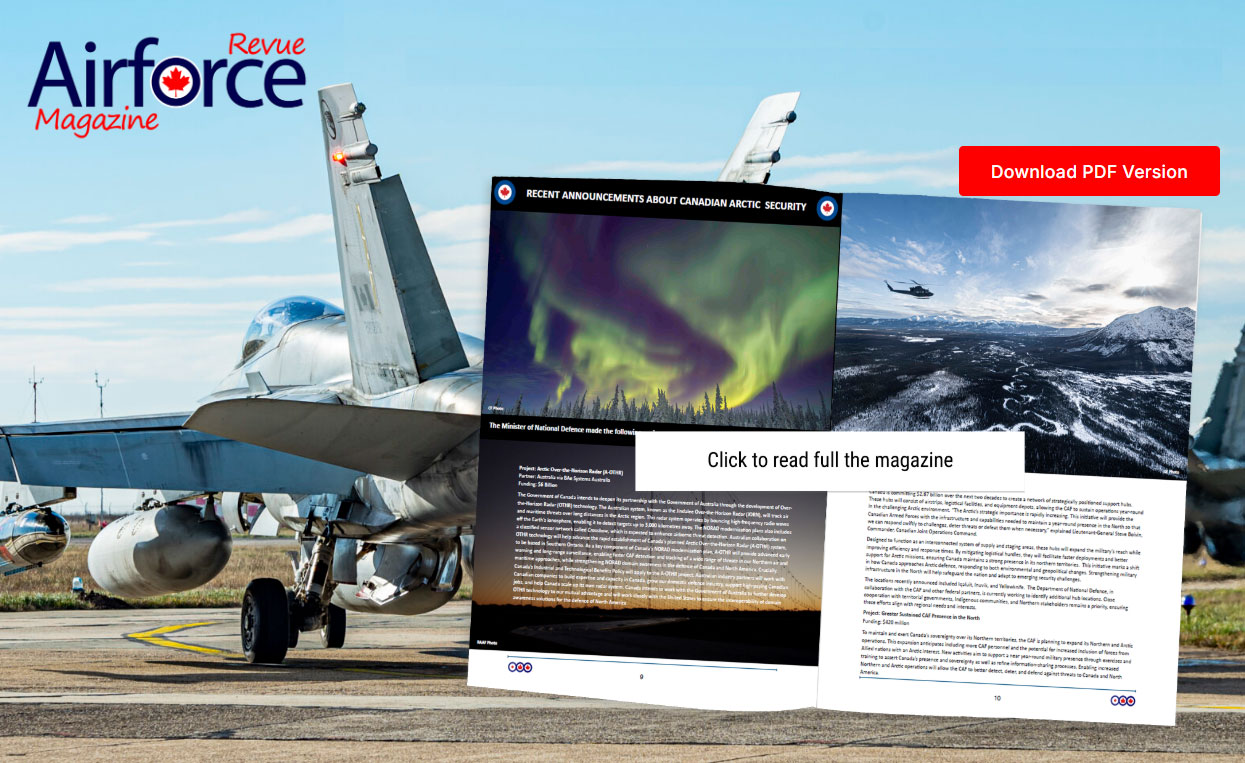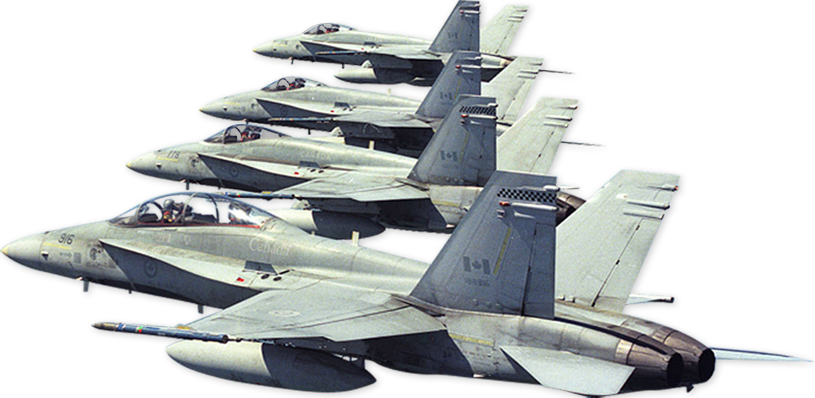BULLEY,
Gordon Henry
Warrant Officer,
No.172 Squadron,
R124688
Distinguished Flying Cross
RCAF Personnel Awards 1939-1949
Description (click to view)
BULLEY, WO Gordon Henry (R124688) - Distinguished Flying Cross - No.172 Squadron - Award effective 27 October 1944 as per London Gazette of that date and AFRO 2637/44 dated 8 December 1944. Born 5 August 1918. Home in Halifax; enlisted there 28 August 1941 and posted to No.1 Manning Depot. To Rockcliffe, 12 September 1941. To No.1 ITS, 26 October 1941; graduated and promoted LAC, 19 December 1941 when posted to No.2 EFTS; ceased training and posted to Trenton, 4 February 1942; to No.4 WS, 14 March 1942; to No.3 BGS, 25 September 1942; graduated and promoted Sergeant, 26 October 1942. To No.36 OTU, 6 November 1942. To No.8 AOS, 17 January 1943. To No.5 Manning Depot, 20 August 1943. Promoted Flight Sergeant, 26 September 1943. To No.111 OTU, Nassau, 1 October 1943. Posted overseas, date uncertain. Commissioned 17 February 1945. Repatriated 2 August 1945. Promoted Flying Officer, 17 August 1945. Retired 21 September 1945. Award sent by registered mail 16 May 1950. Cited with F/L G.E. Whiteley and FS J.W.C. Ford. (both RAF). This is the action in which F/O Roderick B. Gray, GC, was involved. Whiteley got a DSO, Ford a DFM. RCAF photo PL-43958 (ex UK-17086, 10 May 1945) has following caption: “Warrant Officer G.H. Bulley, DFC, (R124689) of 92 Edward Street, Halifax, won his DFC in an action last August. He was the third WAG of a Coastal Command Wellington and was at the wireless set when they attacked a U-Boat. As they flew over it after they dropped depth charges, one engine was shot out and the other set on fire. The crew had to ditch almost immediately afterwards and the three survivors of the crew were picked up by a Sunderland flying boat 15 hours later. He is now back with his squadron flying on operations.”// One night in August 1944, Flight Lieutenant Whiteley was captain and pilot of an aircraft engaged on an anti-submarine patrol. Warrant Officer Bulley and Flight Sergeant Ford were wireless operators/air in the aircraft. During the patrol a fully surfaced U-boat was seen and attacked immediately. Despite accurate fire from the submarine, Flight Lieutenant Whiteley unflinchingly continued his run in and released his depth charges as his aircraft passed over the vessel. The bomber sustained severe damage and crashed into the sea. Only one dinghy was available as the aircraft sank immediately. Warrant Officer Bulley climbed through the astro hatch when some fifteen or twenty feet below the surface. He swam round, flashing a torch until he found the rest of the crew and helped them into the dinghy. Then he remained in the water, tied to the dinghy, endeavouring to keep it head to sea. When the crew were picked up, this airman had been in the water for fifteen hours. Flight Sergeant Ford, who had been badly wounded, displayed great cheerfulness and was an inspiration to his companions.// Public Record Office Air 2/9160 has recommendation drafted by Wing Commander S.R. Ramsay Smith (Commanding Officer, No.172 Squadron) on 31 August 1944. He had flown two sorties (20 hours).// Warrant Officer Bailey was serving as Wireless Operator/Air Gunner in Leigh Light Wellington aircraft which was shot into the sea during a very gallant and determined attack on a U-boat during the night 26th/27th August 1944.// One “K” type dinghy only was available among the four survivors, three of whom were badly injured.// Warrant Officer Balley, although injured himself, remained in the water throughout, holding up another wounded member of the crew who finally succumbed.// I consider Warrant Officer Bulley’s fine display of spirit and his willing and self-sacrificing act in remaining in the water so that his more seriously wounded companions might use the dinghy, to be particularly praiseworthy and I feel deserving of special recognition.// On 3 September 1944, the Air Officer Commanding, No.19 Group (Air Vice-Marshal Baker) added his remarks:// Warrant Officer Bulley was the Wireless Operator in Flight Lieutenant Whitely’s crew. As the attack was being made, and with the port engine on fire with the flames licking down the side of the fuselage, he calmly sent a signal back to base giving the position of the surfaced U-boat.// When the aircraft crashed into the water and sank, Warrant Officer Bulley climbed through the astral hatch when some 15 or 20 feet below the surface. He swam round in the darkness flashing a torch until he found the Navigator - Flying Officer Gray - inflating a one-man dinghy. Warrant Officer Bulley and Flying Officer Gray helped Flight Lieutenant Whiteley, who was wounded, into the dinghy, but unfortunately it was not properly inflated and they had to pull him out again. Warrant Officer Bulley then blew up the dinghy with the emergency pump, and again Whiteley was put in. They then found Sergeant Ford, who was also badly wounded, and put him on top of Whiteley. All through the night Warrant Officer Bulley remained in the water, tied to the dinghy by the straps of his Mae West, endeavouring to keep the dinghy head to sea. At the same time he supported Flying Officer Gray, who was also in the water, there being no room in the dinghy. During the night, Flying Officer Gray died, and he was let go. When they were eventually picked up Warrant Officer Bulley had been in the water over 15 hours, and it was only through his magnificent efforts that the lives of the other two were saved.// Very strongly recommended for the immediate award of the Distinguished Flying Cross.// RCAF Press Release 4087 issued 29 September 1944 read as follows:// WITH THE RCAF IN COASTAL COMMAND:- As his aircraft attacked a U-Boat and was shot down into the sea in flames, Warrant Officer G.H. (Gordon) Bulley (92 Edwards Street, Halifax), radio operator tapped out the “attack” signal to base. This action was routine.// During fifteen hours in the water, however, he demonstrated true Bluenose qualities of courage that probably saved the lives of his captain and another wireless air gunner.// Here is how it happened. Boring through the darkness of a murky midnight the Wellington bomber sighted the submarine. From behind the beam of his million candlepower searchlight, the captain, Flying Officer Eric Whitkey (RAF) dived his ship to attack. First fire from the U-Boat knocked out his portside engine, setting it aflame. Although the fire spread quickly to the fuselage, Flying Officer Whitely pressed home the attack.// At close range another burst knocked out his remaining engine. With no power left he glided over the submarine, dropped the depth charges, and a few minutes later made a crash landing on the water.// “The first thing I knew I saw flames inside the fuselage”, declared Warrant Officer Bulley. “The navigator said, ‘let’s get out of here’. I felt ny way along to the astro hatch, wriggled up through it and swam up through ten or fifteen feet of water before I reached the surface,”// Gordon Bulley found the captain and the navigator trying to inflate a small one-man rubber dinghy which the latter had evidently brought with him as he abandoned ship. In a few moments the other WAG, Flight Sergeant Jack Ford (RAF) swam out of the darkness to join them.// Bulley claims he didn’t do anything heroic during the next fifteen hours. “I jusgt stuck it out”, he says, “because I was luck yo have only a few small bruises and cuts. Flying Officer Whitely and Flight Sergeant Ford both had broken arms. The skipper was badly cut around the face as well. The navigator had a broken leg and possibly other injuries.” Flying Officer Whitely, from his cot in another ward of the same British naval hospital, gives a different version, however.// “Bulley was magnificent”, he testifies. Ford and I both owe our lives to him. He did a dozen and one things for us during that fifteen hour nightmare. He helped each of us in and out of the dinghy as we took turns resting, inflated the dinghy whenever it became soft, and by constant cheerfulness kept all our spirits up. He remained in the water all of the time, and how he did it I don’t know. They say he is quite well after several days in the hospital. He must have a marvelous constitution.”// That afternoon a searching Wellington sighted them, and soon after a Sunderland flying boat, piloted by Flying Officer Tilley, Royal New Zealand Air Force, landed alongside, in a heavy sea, and returned the trio of survivors to Britain.// WO1 Gordon Bulley was an enthusiastic amateur swimmer in and around Halifax before the war. He attended St. Mary’s College and prior to joining the RCAF worked in the Halifax office of the General Electric Company.// RCAF Press Release NO.93 dated 10 March 1945 from S/L S.T. Tilley, transcribed by Huguette Mondor Oates, reads:// Note to DPR: This deals with U-boat attack made by B/172, August 27, 1944. Factual material re WO1 G.H. Bulley, WOP-AG, plus story told in his own words. Final release to be prepared by DPR and Air Ministry in London.// // WO1 Gordon Henry Bulley, DFC (R.124688), 172 Wellington squadron, 92 Edward Street, Halifax, N.S., age 26, Wireless Operator Air Gunner. Son of Mr. and Mrs. J.B. Bulley, 92 Edward Street, Halifax, N.S. Was educated at St. Mary’s College, Halifax. Enlisted in RCAF in August, 1941. Wings at No.3 Bombing and Gunnery School, MacDonald, Manitoba, in October 1942, and came oversea in February 1944 to join 172 squadron. Before this crash, he had completed three operational patrols in the Bay of Biscay. This was his first U-board attack and he has not yet had another although he is now back with his own squadron and once again on ops.// Statement of WO1 G.H. Bulley taken by the S.P.R.O. in Glasgow on March 10th, 1945:// “On the night of August 27th, we took off from an airdrome in the south of England to carry out a routine anti-sub patrol over the Bay of Biscay. Flying in Wellington “B for Bob”, we were between the U-boat bases of Lorient and St. Nazaire when, at 13 minutes past midnight, we found our target about eighty miles off the French coast.”// “It was a fully surfaced Nazi submarine with its gun crews standing at action posts on deck. Operating the wireless set at the time, I couldn’t see anything of the attack which followed. And the first indication I had that we were going down to drop depth charges came when F/O Gray, our navigator, touched me on the shoulder and asked me to send a flash report to Coastal Command Group Headquarters.// “As soon as we’d located the sub with our Leigh Light searchlight, the Nazi gunners opened fire with an intense flak barrage. Our port engine was hit and immediately caught fire. All of this happened as I was sending out the wireless report saying we’d discovered a U-boat operating in such and such an area. I couldn’t see our depth charges fall but the skipper told us later he felt certain we’d scored a definite straddle. But when we passed over the sub’s conning tower, the flak barrage again hit our kite and this time it put the starboard engine out of commission. With no engines left, we flew right into the ocean and crashed.”// “Two of the crew, the second pilot, F/O Tommy Robb of British Columbia, and a RAF WOP-AG, F/S Rowell, were trapped in the aircraft and they didn’t have a chance. I was knocked out and can’t remember anything that happened during the next few seconds. But I do know that the Wellington didn’t float long and by the time I came to, I found myself fifteen feet under water. Fortunately, the cover of the astrodome had been taken off by F/O Gray just before the crash so I pulled myself through the opening and somehow managed to swim to the surface. I’d always done a lot of swimming in the North West Arm in Halifax and it was probably that experience which save me.”// “When I finally reached the ocean surface, I could see that F/O Gray had managed to escape with a ‘K’ type dinghy, which is a type of dinghy only large enough to hold one man. And I could hear cries from the skipper who was nearby but without a dinghy to cling to. Swimming over to join Gray, I tried to help him inflate his dinghy. There was a choppy sea at the time and it certainly wasn’t what I’d call an easy job. When we again heard the skipper crying for help, Gray and I took the dinghy over and helped him climb into it. But not long after the skipper had climbed into the dinghy, we saw the life raft was starting to lose air so we had to take him out of it while I climbed in and pumped it up manually. As I did this, Gray and the skipper climbed to the side of the dinghy and floated in the ocean supported by their Mae Wests.”// “When the dinghy was fully inflated again, I got out of it and helped the skipper back in. He’d been badly wounded, couldn’t move his right side, his left hand was badly mashed, and his face cut. Gray also was seriously injured and he told us he was sure his leg had been broken. For my own part, I was quite o.k. with nothing more serious than a few minor cuts and bruises. Not long after we got the skipper into the dinghy, we heard cries of help coming from the other WOP-AG, F/S Ford, so Gray and I both swam through the ocean and finally located him in the darkness. He had a broken arm and couldn’t swim with it at all, so we pulled him into the dinghy and placed him on top of the skipper.”// “I couldn’t see any sign of the U-boat but it wasn’t long before we all heard the engines of an aircraft flying overhead. But they didn’t see us and passed on. Gray and I clung to that dinghy until dawn and we never really gave up hope. My legs were beginning to stiffen up but I felt that I personally could stick it for another night. Gray, on the other hand, wasn’t so well off. He was suffering tremendously and all of us did everything we could to encourage him to keep up his spirits.”// “It was a hell of a night and when dawn finally broke, Gray gave no sign of life. We tried to shake him but immediately realized he was dead. So there was nothing else for us to do but cut him loose from the dinghy. That left the three of us, the skipper, F/S Ford, and myself. I continued to cling to the dinghy all that morning and afternoon until finally, 15 hours after our crash, we were spotted by a Wellington crew from our own squadron. They circled the dinghy and flashed out a message telling us to hold on because they would send help. So we waited.”// “Three-quarters of an hour later, two Sunderland flying boats flew right over us. One circled while the other landed and picked us up. In the aircraft, they gave us all hot tea. Utterly exhausted, I fell asleep and awoke to find we’d landed and were being rushed to a naval hospital in Plymouth.”// “Never as long as I live shall I forget Cy Gray’s courage. I definitely owe my life to him because I wouldn’t be alive today if he hadn’t had the foresight to remove the cover of the astrodome. And what’s more, Cy Gray, disregarding his own suffering, gave up his place in his own dinghy to those of the crew whom he felt were more seriously wounded. In my opinion, he was just about the biggest hero that ever lived.”// RCAF Press Release No. 163 dated 27 July 1945 (by S/L S.L. Tilley) read as follows:// WITH THE RCAF IN COASTAL COMMAND: --- Pilot Officer Gordon H. Bulley, D.F.C., 92 Edward Street, Halifax, R.C.A.F. wireless operator air gunner who was shot down into the Bay of Biscay by a German U-boat last year, is now on his way back to Canada for demobilization.// During his Coastal Command flying days, P/O Bulley served with an R.A.F. Wellington bomber crew whose job up until VE day was sub hunting in the Bay of Biscay, English Channel, and the North Atlantic. After being shot down during a tangle with one U-boat, and spending 15 hours clinging to a rubber dinghy before being rescued, he went back on operations and evened accounts with the enemy by attacking another Nazi sub in the Atlantic just before the European war ended.// Having completed his R.C.A.F. job overseas, P/O Bulley recently passed through the Canadian Repatriation Depot at Bircham Newton, England, where he joined a large number of other Maritime airmen en route home for demobilization and a job in civilian street.








